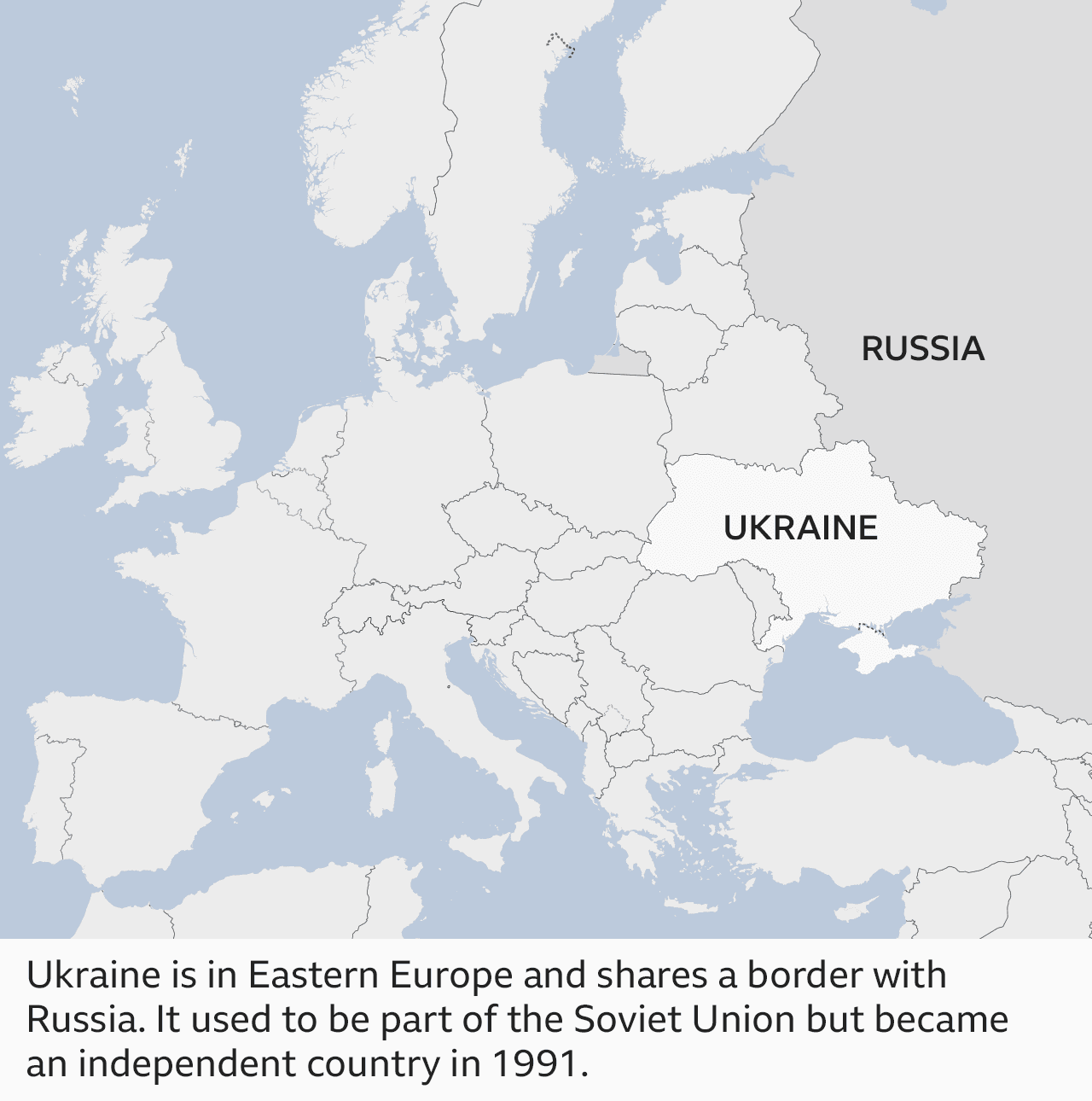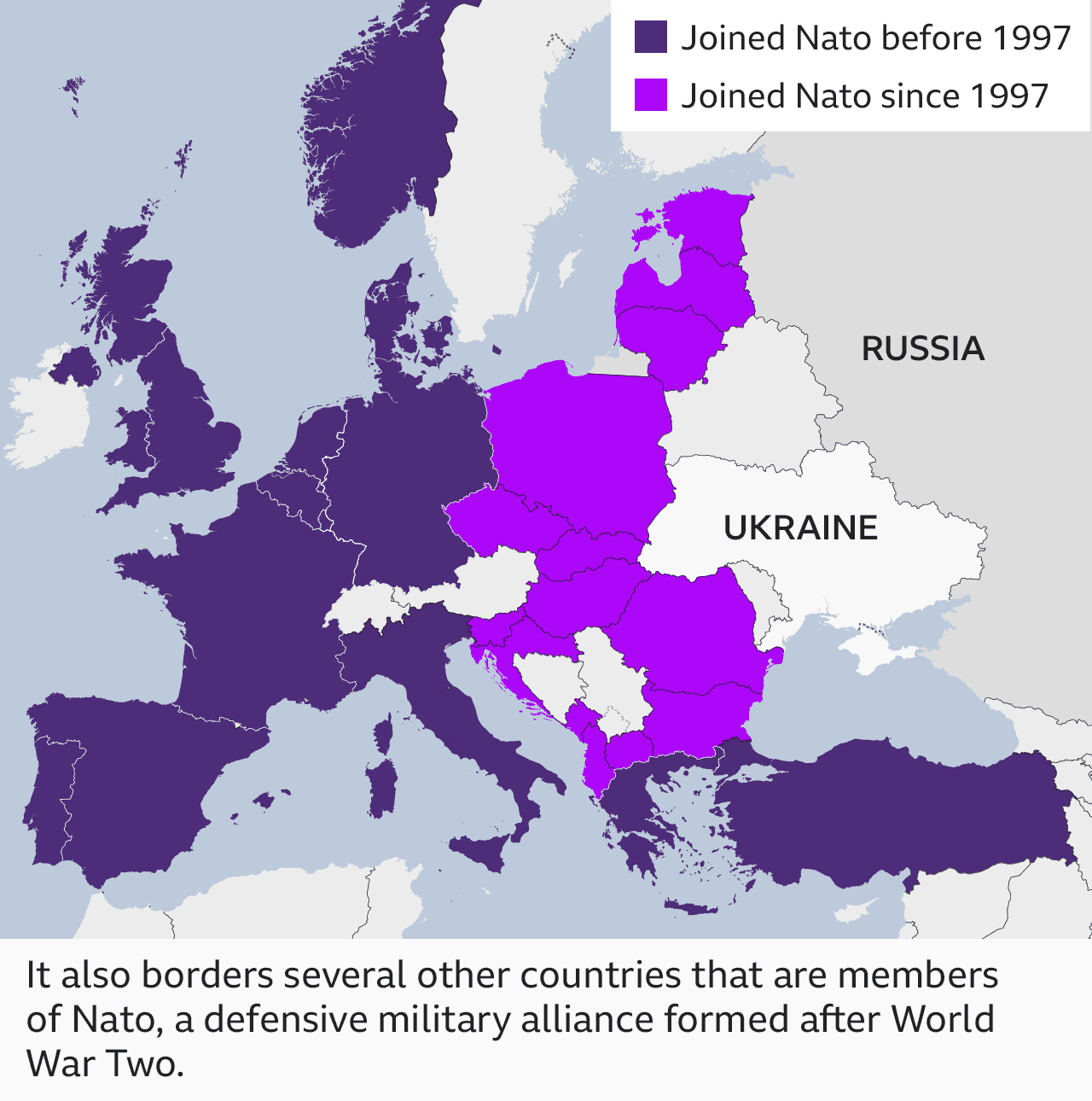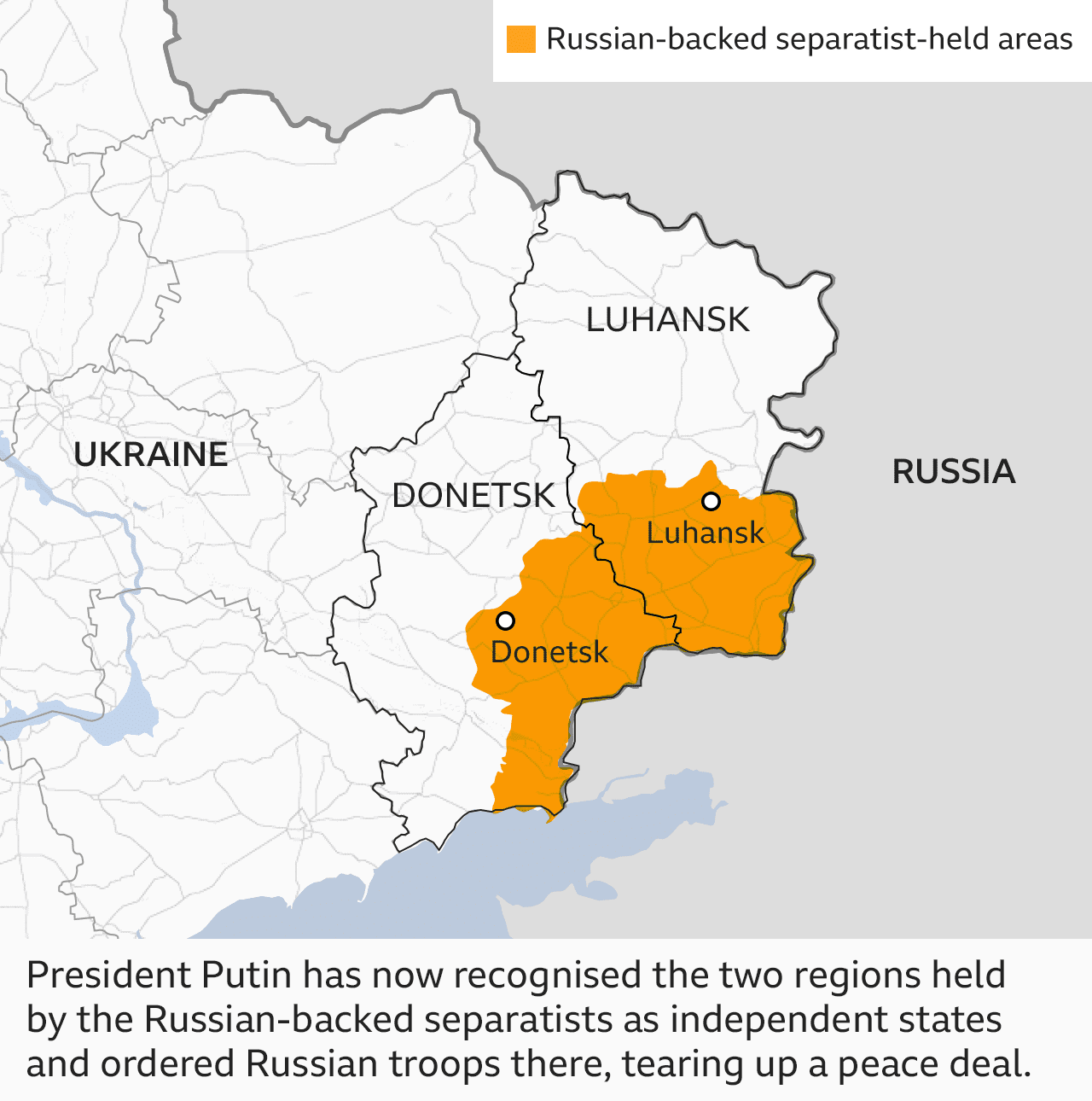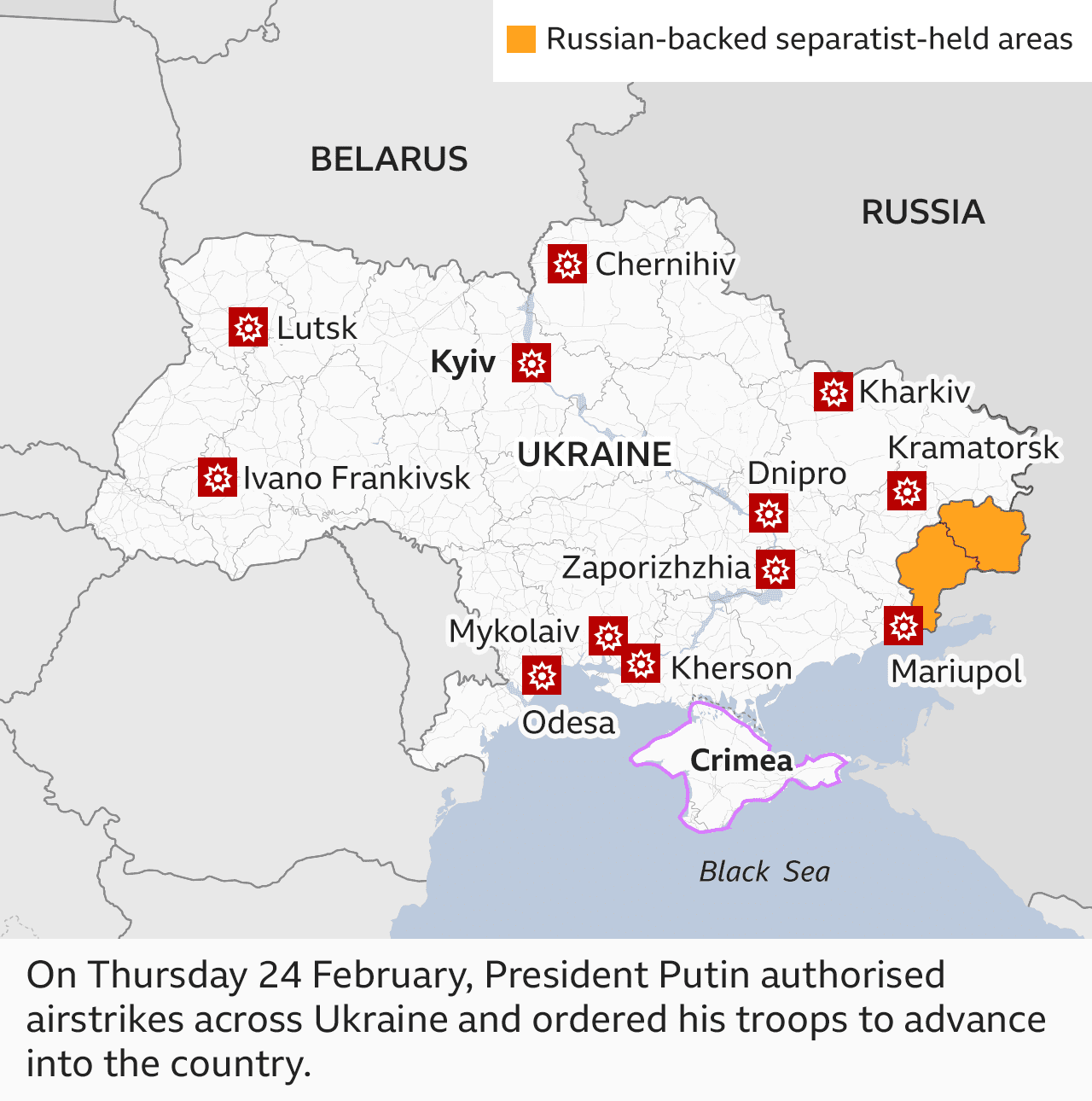Ukraine conflict: Your guide to understanding the story
- Published
WATCH: How Russia's invasion of Ukraine unfolded on day one
Russia has launched a full-scale invasion of Ukraine, leaving millions of people fearing for their futures.
As the first day of this assault nears its end, the enormity of what this could mean is still difficult to process.
From the early panic in Ukraine's cities, to the broader context that led us here, this is your guide to understanding day one of the invasion.
'He was so scared'
The first explosions came in the early hours of Thursday - bringing panic and uncertainty.
The BBC's Marta Shokalo was in the capital, Kyiv, and wrote movingly about the initial fear and how it rippled through the country. WhatsApp messages pinged. Friends and colleagues sought safety.
"I dressed my 10-year-old son. We had some breakfast, sitting as far from the windows as we could, but he was so scared he vomited," she wrote.
Can Ukraine resist?
As the scale of the attack became clear, and the Ukrainian military worked to respond, many questioned whether the country would be able to resist the military might of its neighbour.
As our defence correspondent Jonathan Beale explains, Kyiv is outgunned and outnumbered in every sense.
Its military, he says, faces an enormous challenge to defend its vast border.
WATCH: Footage from Ukraine shows explosions, a missile strike and a helicopter under fire
The attack mapped
Geography is at the heart of this story.
Ukraine's position between Russia to the east and countries such as Poland and Romania to the west means it straddles both the European and Russian spheres of influence.
This is a major reason why tensions are so high. Russia has long resisted Ukraine's move towards the European Union.
But geography is also key to how the invasion played out. Moscow, after all, mounted its attacks via air, land and sea.
In this piece, we mapped Russia's attacks. The enormity of the assault is clear.
One question - why?
As fierce fighting continued, and videos spread of tanks rolling into Ukrainian territory, many on social media asked what Russia's president was thinking.
What exactly does Vladimir Putin want?
Our explainer tackles this question - among others - and takes the conflict back to basics.
The big picture
John Simpson, our World Affairs Editor, writes that this feels like the end of an era.
He compares it to the fall of the Berlin Wall in 1989, which marked the collapse of the Soviet Union and saw the global order rewritten.
The invasion of Ukraine, he writes, could be traced back to this collapse which President Putin resents bitterly.
Allies hit back
As the day developed, we saw furious reaction from the US, UK and its allies.
UK Prime Minister Boris Johnson described the invasion as a "hideous and barbarous venture". US President Joe Biden said "Putin chose this war" and would "bear the consequences".
Both announced new sanctions aimed at hitting Russia's economy and the finances of its elites.
If you're unsure about what measures have been imposed so far, and what impact they could have, it's all here.
The economic toll
The invasion is likely to have major effects on people around the world.
From energy bills to the price of cars, our business reporter Lora Jones explains why prices could rise globally.
Read it here: Why Ukraine crisis could cause global price rises
- Published25 February 2022
- Published24 February 2022
- Published24 February 2022





